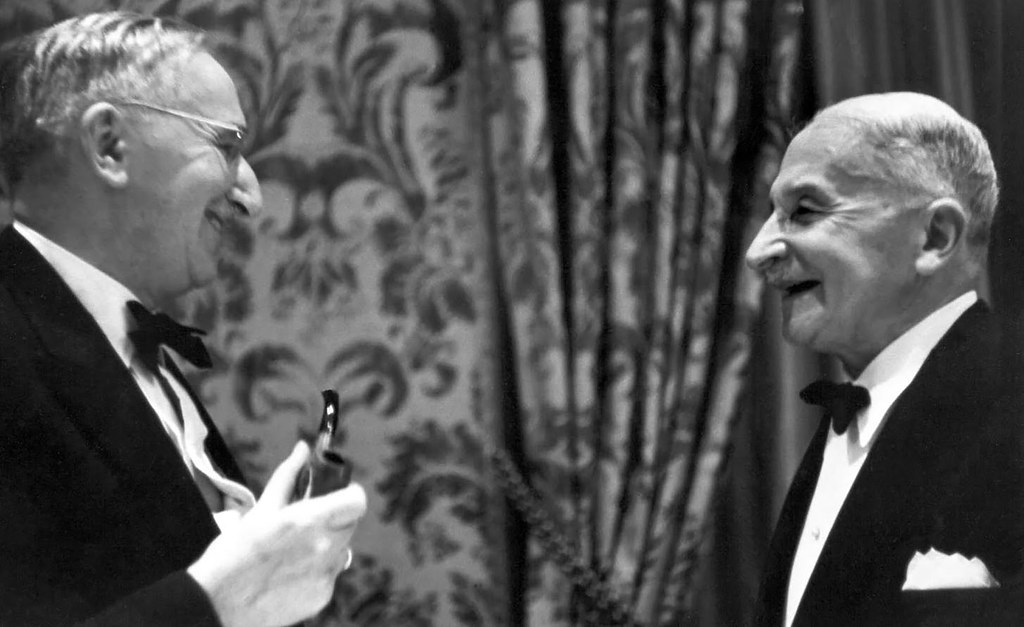With two consecutive quarters of negative GDP growth recorded for the first half of this year, most agree that our economy has slipped into recession. But few will agree on its cause.
Given the Biden administration and others’ attempts to blame skyrocketing price inflation on multiple factors besides its true cause, opponents of a free-market economy will attempt to blame the recession on capitalism itself and the supposed excesses and greed it facilitates. Booms and busts are inevitable in a capitalist system, many will insist.
Not true.
Just as it is the case that the machinations of the Federal Reserve — the nation’s central bank — are to blame for price inflation, so too are they the root cause of booms and busts. “Centralisation of credit in the hands of the state, by means of a national bank,” by the way, is one of the planks of the Communist Manifesto, decidedly not a feature of free-market capitalism.
Business cycle theory takes many forms and has had countless books and essays devoted to it. But the layman can save themselves months of reading and study and get at least a surface-level, cursory understanding of how boom leads to bust through an analogy provided by 20th century economist Ludwig von Mises in his 1949 book “Human Action.”
Mises began, “The whole entrepreneurial class is, as it were, in the position of a master builder whose task it is to erect a building out of a limited supply of building materials. If this man overestimates the quantity of the available supply, he drafts a plan for the execution of which the means at his disposal are not sufficient.”
Imagine a builder making plans to build a house. He draws up these plans thinking he has access to a certain amount of resources — bricks, lumber, siding, labor, etc. So why would the builder “overestimate the quantity of available supply,” as Mises wrote?
False signals and incentives.
Interest rates in the economy, which are largely shaped by Federal Reserve monetary policy, send important signals and incentives throughout the economy. Low interest rates incentivize business investment by making borrowing cheap and also signal that the supply of loanable funds is plenty. Specifically, investments in longer-lasting durable equipment or even durable consumer goods like housing that are most sensitive to interest rates will be increased. This distinction is important to make because the boom/bust cycle is a story not of general overinvestment, but of investment in the wrong lines of production that turn out to be unsustainable — what Mises termed malinvestment.

But when interest rates are suppressed at artificially low rates via Federal Reserve easy money policy, as they were for about 12 of the 14 years between 2008 and 2022, the incentive for businesses to borrow is still strong despite the underlying signal being falsified. Indeed, interest rates were at historic lows not because of an abundance of actual savings available to be loaned by banks, but due to massive money creation out of thin air by the Fed. As Mises wrote, this faulty signal misleads entrepreneurs about the “available supply” of resources available for investment.
Returning to Mises, he continued, “He (the master builder) oversizes the groundwork and the foundations and only discovers later in the progress of the construction that he lacks the material needed for the completion of the structure.”
Here Mises is referring to entrepreneurs being confronted by the reality that resources available for their projects are not as abundant as the artificially low interest rates were falsely suggesting.
For instance, Mises continued, “They embark upon an expansion of investment on a scale for which the capital goods available do not suffice. Their projects are unrealizable on account of the insufficient supply of capital goods.”
The artificially low interest rates incentivized a surge in business investment but did not create the additional capital goods these investments required. With heightened demand for a relatively static supply of capital goods, the prices of such inputs are bid up. Today, we see this reflected in producer input prices rising at rates not seen in four decades.
Moreover, as the Federal Reserve raises interest rates to cool inflation, it means a shrinking of the money supply and the easy credit it fuels. So not only are there fewer capital goods than anticipated, borrowing becomes more expensive — reflecting less availability of fiscal capital to complete or sustain the entrepreneurs’ investment projects.
At the elevated costs of production, entrepreneurs begin to abandon projects “which cannot be continued and finished because it has become obvious that they will not pay.” In other words, the production costs rise to the point to where the entrepreneur cannot make profit because the selling price needed to recover production costs will be more than consumers can afford.
We see this, for example, beginning to happen in the overheated housing market. Soaring construction costs (plus rising mortgage rates) have pushed housing prices to a point beyond many consumers’ grasp, and as a result we’ve seen new housing sales falling dramatically since the beginning of this year.
As Texas Tech economist Robert Murphy summed it up: “During the boom period, driven by the influx of unbacked money and artificially cheap credit, entrepreneurs begin various projects that are physically unsustainable: there is simply not enough ‘real’ savings to carry all of the projects to completion.”
As the recession unfolds, blaming “unrestrained capitalism” and “corporate greed” will quickly circulate. But economic booms and busts are not inherent in a free-market system. Instead, the false signals and distortions created by central bank fiat money creation are what leads to unsustainable investment projects. It’s critical to understand the causes of business cycle fluctuations if we ever want to put an end to them.
Brian Balfour is Senior Vice President of Research for the John Locke Foundation.